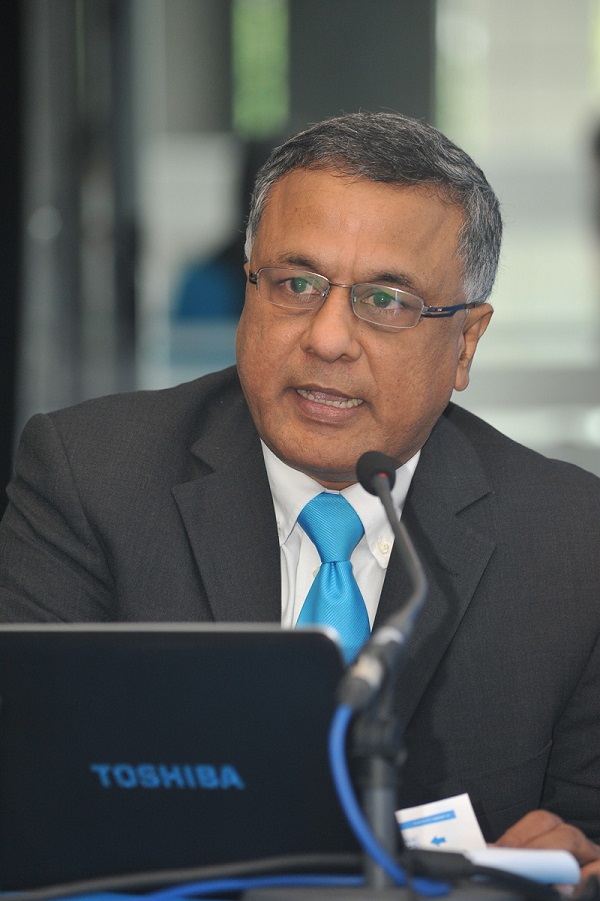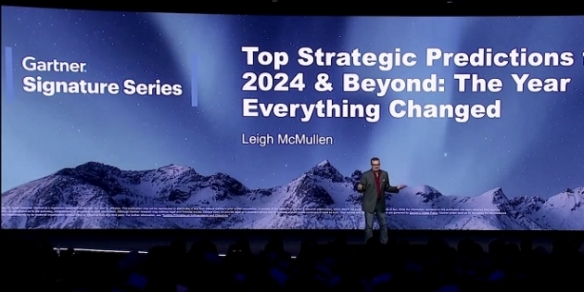Revenue at all-time high for Axiata in 2015
By Lum Ka Kay February 18, 2016
- Revenue up 6.3% to US$4.8bil, Celcom continues to drag
- 7.8% growth in net profit partly helped by forex gains

AXIATA Group Bhd, the Kuala Lumpur-headquartered regional mobile telecommunications group, posted a 7.8% growth in net profit for the financial year ended Dec 31, 2015, partly helped by foreign exchange (forex) gains and strong performances from its Sri Lankan, Cambodian and Indian units.
It registered a net profit of RM2.55 billion versus RM2.35 billion from a year ago, and also posted a 6.3% growth in revenue to RM19.9 billion (US$4.8 billion), an all-time high for the company. [RM1 = US$0.24 at current rates]
Axiata’s full-year net profit was also slightly above most analysts’ expectations. UOB Kay Hian had pegged it to register a full-year net profit of RM2.2 billion, while Alliance Research had expected it to be RM2.16 billion.
“The high net profit was fuelled by forex translation gains, tower gains and our diverse portfolio of businesses spread across key emerging Asian markets,” Axiata president and group chief executive officer Jamaludin Ibrahim told a media briefing in Kuala Lumpur on Feb 17.
The year also saw Axiata hit most of its headline key performance indicators (KPIs) – it had aimed for 2015 revenue and Earnings Before Interest, Tax, Depreciation and Amortisation (EBITDA) to grow by 4%. It managed to grow its EBITDA by 4.1% to RM7.3 billion.
The not-so-good news is that it was slight away from achieving its Return on Invested Capital (ROIC) and Return on Capital Employed (ROCE) targets of 8.7% and 7.7%, respectively.
The group’s ROIC and ROCE, which are measures of the profitability of capital deployment, were at 7.7% and 6.7%, respectively.
Celcom a drag
 Axiata’s Malaysian unit Celcom Axiata Bhd did not fare quite so well. During the year, Celcom’s revenue dipped 5.1% to RM7.3 million.
Axiata’s Malaysian unit Celcom Axiata Bhd did not fare quite so well. During the year, Celcom’s revenue dipped 5.1% to RM7.3 million.
It also suffered a decline of 2% in subscribers to 12.3 million, compared with 12.5 million subscribers in the third quarter.
The good news is that Celcom is likely to have hit its bottom and is expected to see a better performance this year.
When contacted by Digital News Asia (DNA) via phone, Axiata group chief financial officer Chari TVT (pic) said he was certain that the company’s performance will pick up as its IT transformation programme is coming to an end, although he didn’t give specifics on Celcom’s expected growth for 2016.
In 2014, Celcom deployed an integrated customer relationship management (CRM) platform enabled by Accenture and Oracle, to “transform its customer experience.”
However, things did not go according to plan, resulting in a 19% decline in its net profit for its 2014 financial year, during which time it also failed to achieve most of its headline KPIs.
Meanwhile, Indonesian unit XL Axiata’s revenue and EBITDA declined 2.6% and 2.7% to 23 trillion rupiah and 8.4 trillion rupiah in 2015, respectively.
Once again, the performers for Axiata in 2015 were Dialog Axiata Plc, Robi Axiata Ltd and Smart Axiata Co Ltd – the group’s operating units in Sri Lanka, Bangladesh and Cambodia, respectively.
Dialog registered a 10% increase in revenue and 14.2% increase in EBITDA.
According to Jamaludin, the strong revenue growth was driven by Dialog’s mobile, fixed-line and TV businesses, which grew 9.7%, 12.9% and 22.6%, respectively.
Robi and Smart grew their revenues by 6% and 29% for 2015, respectively.
Noting that Smart had done “super-duper” well in 2015, Jamaludin said the revenue rise in Smart was driven by a 7.3% improvement in voice and an 86.2% spike in data revenue.
“With accelerated 4G-LTE (Fourth Generation/ Long-Term Evolution) rollouts, data revenue now contributes 32.3% to the total revenue of RM907 million,” he said.
QoQ growth
From the quarterly perspective, Axiata’s subsidiaries in Indonesia and Malaysia, XL Axiata and Celcom Axiata, demonstrated strong quarter-on-quarter (QoQ) growth, with Celcom recording its first revenue growth of 1% after three consecutive quarters of decline.
Celcom’s smartphone penetration rate remained flat at 59% for the fourth quarter compared with the previous one.
Chari’s comment on the flat penetration rate was that it is “not too bad.”
“It is a concern for us but it’s not too bad as I’m sure many of our customers will soon move on to own a smartphone,” he said.
XL Axiata’s transformation agenda saw it recording its third successive quarterly improvement in terms of revenue and EBITDA, 2% and 5.6%, respectively.
“If you recall, for the past few quarters we have been talking about how XL as the price leader has transformed itself to a more value-for-money provider and moved up a scale to go for the medium- and higher-end value chain,” said Jamaludin.
“I’m happy to report that the outcome of that strategy has clearly been very encouraging.
“From a trend perspective, XL’s growth has been very positive and this is enough for us to say that we’re on the right trajectory for the transformation strategy,” he added.
Capex allocations for 2016
 The Axiata group, 39.4% owned by Malaysia’s sovereign wealth fund Khazanah Nasional Bhd, plans to spend RM5.7 billion in capital expenditure (capex) in 2016, a 15.8% jump from last year’s RM4.8 billion.
The Axiata group, 39.4% owned by Malaysia’s sovereign wealth fund Khazanah Nasional Bhd, plans to spend RM5.7 billion in capital expenditure (capex) in 2016, a 15.8% jump from last year’s RM4.8 billion.
XL Axiata and Celcom will be allocated RM1.9 billion and RM1.2 billion of capex, respectively.
Dialog has a planned capex RM900 million, Robi has RM600 million and Smart has RM500 million.
According to Jamaludin (pic), Axiata will be marching into Nepal with its acquisition of Ncell, the country’s No 1 telco operator.
The acquisition is expected to be completed in the second quarter of 2016, and a capex of RM300 million will be allocated for the Nepalese market.
The remaining capex will partly go to its communications infrastructure solutions and services company edotco Group, its digital services business, and others.
2016 KPIs
For 2016, Axiata expects it revenue to grow 12.2%, EBITDA to grow 16%, and ROIC and ROCE to grow 6.8% and 6.1% respectively.
“For 2016, our KPIs are as usual – ‘usual’ as in aggressive,” declared Jamaludin, adding that 2016 will be a year for Celcom to continue its recovery.
“Generally, we were hampered for 1.5 years in terms of the ability to launch new products. This year, we could launch more and more data-led products.
“Secondly, we want to continue to have leadership in the network space. We’re still the best network in the country, not in every location, but in general, if only marginally.
“Having said that, we don’t want to be marginal, we want to be a lot better. We’re going to be very aggressive in rolling out 4G-LTE and data-related networks.
“Third, the customer experience,” he added.
Last month, Celcom signed three deals with fixed-line giant Telekom Malaysia Bhd where Celcom will offer fixed-line broadband services to its customers, alongside its mobile offerings.
Related Stories:
Axiata sees consolidation opportunities, eyeing M&As
Margins are misleading indicators, says Axiata CEO
Rivals Celcom and TM unite in converged play
Axiata’s bumpy IT transformation programme: Lessons learnt
For more technology news and the latest updates, follow us on Twitter, LinkedIn or Like us on Facebook.


